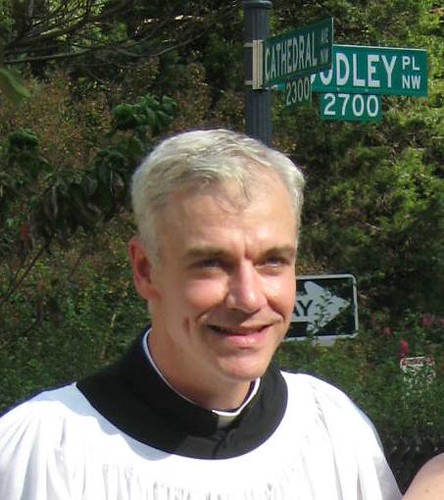The First Sunday in Lent
A sermon for the First Sunday in Lent, February 21, 2010. The lectionary readings are Deuteronomy 26:1-11, Psalm 91:1-2, 9-16, Romans 10:8b-13, and Luke 4:1-13.
Around this time of the year I think about T.S. Eliot’s poem, Ash Wednesday. If you run out of things to do this week or want a Lenten meditation, I encourage you to look it up.
But today’s scriptures make me think of another poem of Eliot’s, or at least the beginning of one of his poems. There is a section of “Little Gidding” (Section 5 of “Little Gidding” from “Four Quartets”) that begins
We shall not cease from exploration
And the end of all our exploring
Will be to arrive where we started
And know the place for the first time.
Eliot plays with time and sequence in this part of the poem. “The end of all our exploring / will be to arrive where we started / and know the place for the first time.”
All kinds of things can invite us to return to our roots, to think about where we come from, or to remember old experiences. Sometimes it happens when we re-connect with an old friend. It happens when we get Christmas cards, especially the ones that include photos. It can happen when someone we know and love dies. It can coincide with a birthday or an anniversary. Or the liturgical seasons themselves, the rhythm of the church year, can invite us to turn and to return—to our beginnings, to our early experiences of God. Sometimes having returned, we find we’re in a new place altogether. We “know the place for the first time,” but we meet God (and ourselves) again.
In the first lesson from scripture, the people of Israel are given specific instructions on how to move forward, move into the promised land, but how to do so without ever forgetting where they’ve come from. Rituals of remembrance are put into place. Specific foods are mentioned. Religion is referenced. And a celebration of bounty tops off the feast. The people are being prepared for a change, for a growth spurt, for conversion, for the Passover.
In the second reading today, Paul’s Letter to the Romans reminds those early Christians of their inheritance, that the Holy Spirit has come into their hearts and planted there the spark of God’s love and life. “The word is near you,” Paul says, “on your lips and in your heart.” And so, don’t doubt. Don’t fear. Don’t worry so much about getting lost, because God has given you a spiritual GPS that will bring you back to God (and back to yourself) in God’s own good time.
In the Gospel, Jesus has all of this tested. The devil appears and tests Jesus’ sense of himself, his sense of his own history with God, and the devil certainly puts to the test Jesus’ own internal GPS, what we could possibly (though clumsily) call a “Godly positioning system.”
Whether we picture the devil as a little red man with a tail and pitchfork, or whether the devil is more that little voice inside each of us that second-guesses and accuses, the temptations Jesus faces are ones that we might be confronted with from time to time.
The temptation of turning stones into bread, is really the temptation of gluttony, to satisfy ourselves with food and drink and stuff, to find happiness in these things.
The temptation of pursuing glory and authority of the world is not so different for us. There are the countless choices we make between doing the thing that will better our paycheck or professional standing or status, as opposed to doing the just, honest, true and decent thing.
Finally, the third temptation for Jesus to jump off the temple top and be rescued by angels, is among other things the temptation we sometimes feel for safety, the temptation to stay out of the struggle, away from the conflict, in our own quiet, secure little corner of the world.
To each of the temptations offered by the Devil, Jesus quotes scripture. In other words, Jesus touches base, he calls home, he does whatever he needs to do to center himself and remind himself of who he is and of whose he is.
The season of Lent is a good time for us to take stock of our “homing devices.” What contributes toward our having a GPS, or Godly positioning system? Is it prayer? Scripture? Conversation with other people of faith and integrity? Is it getting deeply involved in a cause? Is it meditation, or Centering Prayer, or yoga, or fitness, or a sacred meal?
The life of faith bears out the words of Eliot, that “We shall not cease from exploration.” But through the grace of God, through remembering and reconnecting with the holy within us, “the end of all our exploring / [can] be to arrive where we started /And know the place for the first time.”
May this season draw us closer to God and closer to our true selves.
In the name of the Father, and of the Son, and of the Holy Spirit. Amen.






